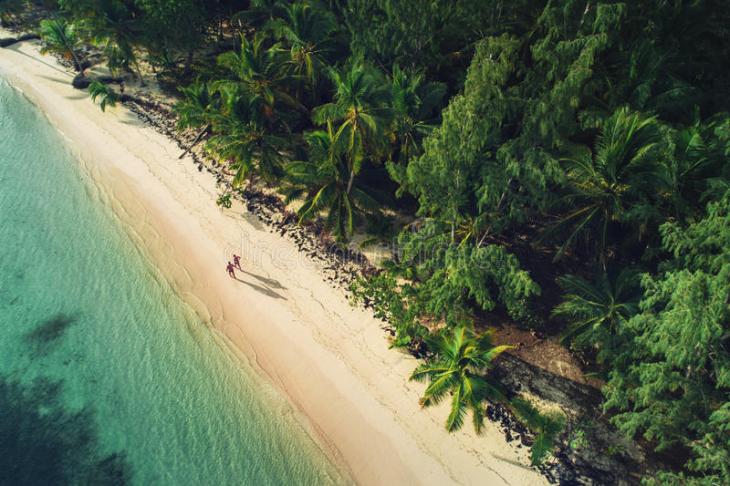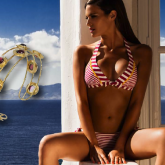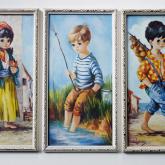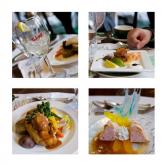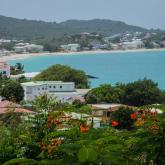
Discover sangria, golden sunshine, sizzling salsa picante on Caribbean isles rich in Hispanic culture and handsome Colonial architecture commissioned by the Spanish crown.
Although a century or more has passed since the Spanish Mother Country lost the last of its Caribbean colonies, the Spanish heritage remains pervasive in everything from language and food, to dance and architecture.Ever since Columbus sailed the ocean blue in 1492 and made land on the islands of the Caribbean the region has boasted a heritage rich in the colourful influences of Spain. The pets and livestock that arrived with the Conquistadors can be seen on the island, with pigs, horses, goats, cats, dogs and chickens at the heart of island life. The many crops the Spanish introduced remain important to the fortune and culture of the islands, from sugar cane and bananas to citrus fruits.
Today Cuba, Hispaniola (of which the Spanish part is the Dominican Republic) and Puerto Rico are among the Caribbean’s largest islands. Also considered part of the Spanish Caribbean are Colombia’s islands of San Andres and Providencia: two palm-fringed coralline isles 150km from the coast of Nicaragua with the Colombian mainland 800km away.
Colourful Spanish culture fuses withf West African vibrancy in Cuba, a nation renowned as the birthplace of salsa and a hotbed of untold musical riches. Cuba’s heady artistic tradition is world-renowned from the fast percussive change and spontaneous up-tempo rumba to the earthy tonal laments of guajira and música campesina, Cuba’s Spanish-influenced harmonies continue to characterise the national psyche. A troubadour tradition has spawned umpteen derivatives of Spain’s décima music to create dozens of Latino melodic hybrids. Today Cuba’s musical heritage is as famous as its rum, cigars and clapped-out American Chevrolets in a country that is home to some of The Americas’ most magnificent Spanish colonial cities.

Highlights begin with exuberant Havana, the largest capital city in the Caribbean where custard-coloured bubble-shaped taxis buzz race around at machine-gun pace. Explore the alluring facades of Colonial buildings in faded bubble-gum hues and gloriously decrepit churches en route to the famous mural of Che Guevara on the Plaza de la Revolucion. Domino-playing elders suck on thick cigars in pavement cafes by the Museum of the Revolution in the old presidential palace close to the boat in which Fidel Castro and Che Guevara arrived to ignite the Cuban Revolution. Head to the Cathedral Square to sip top-notch mojitos and watch the world go by - it's one Havana’s most captivating views.
Another must-see is the beautiful Spanish colonial town of Trinidad, one of finest and easily accessible in Cuba. Stroll cobbled streets in this pretty stone-built settlement founded by Spanish traders to fine museums clustered around a charming central square - a spellbinding historical backdrop on which to enjoy the sweet sounds of Cuban street musicians.
A resplendent 21km stretch of white sand hemmed by gleaming top-class hotels attracts beach-lovers in their droves to the resort town of Varadero, which has wong been the pride of Cuba. Part of a peninsula that stretches far out into the calm waters of the Atlantic, Varado is fanned by cool tropical breezes. Aside of world-class water sports Varadero offers plenty of cultural attractions in the nearby cities of Cárdenas and Matanzas, both bastions of art and history. Bellamar Cave, on the outskirts of Matanzas, is a 2km of unworldly underground passages clad in calcite crystals, stalagmites and stalactites that ranks high amongst the most unworldly go the underground formations in the Caribbean region.
Dubbed a “semi-detached nation”, the Dominican Republic is part of a sovereign country that shares the island of Hispaniola with the French-speaking nation of Haiti. Hundreds of years of wrangling between the Spanish prompted an 18th century African slave uprising that divided Hispaniola. The Republic of Haiti was founded in the western half of the island, leaving the rest of the country to the Spanish, with Santo Domingo as its capital. Today it boasts the distinction of being the first seat of Spanish colonial rule in the New World and the oldest continuously inhabited European settlement in The Americas.
The conquistadors of Spain still influence the modern era of the Dominican Republic where the striking Colonial quarter (Zona Colonial) for its spiritual and cultural heart. Stone-paved streets boast a plenitude of similarities to Havana, from its pastel-painted buildings and cigar-chomping café con leche drinkers and dilapidated American cars. Much like the Cuban capital, the streets of Santa Domingo are drenched in music, although its home-grown merengue and bachata – not salsa – that courses through the city’s veins. Expect vibrant processions of sassy movers and pulsating boom-box beats during Carnival for one of the most fervent parties in the region or during July when the merengue festival draws the crowds.
Another semi-detached Spanish-speaking country is Puerto Rico, part of the US but a political Commonwealth ruled by Washington. A convenient hop from Santa Domingo and well-connected by frequent flights to and from America, Puerto Rican’s have dubbed their homeland Caribbean’s “fun capital” and up-tempo Puerto Rico truly enjoys living up to the hype. A popular party playground with fun-loving American vacationers, Puerto Rico is an exotic fusion of Latino-US-Caribbean cultures where hearty Creole dishes and Tex-Mex meals are washed down with citron-infused Medalla beer and rum. Year-round festivals and carnivals mix American and Spanish although Puertorriqueños remain fiercely patriotic and uphold La Borinqueña island traditions with considerable pride. Although Spanish is the official language, Puerto Rico uses English in many of its business settings. With the Florida shoreline less than 1000 miles away. Passports are not required for American visitors, with the dollar the official and only currency, a phone and the electrical system are all US-style.

Puerto Rico comprises a main island (Puerto Rico) and a number of smaller islands and keys. A mountainous interior region leads to a ribbon of soft-sand coastal plain in the north with precipitous peaks out to open sea on the western shore. At roughly the size of Connecticut, mainland Puerto Rico is easily traversed in three-hours with towns that vary dramatically in character, from the swish resorts and café scene of capital San Juan to the resplendent aged architecture of the city of Ponce. Most visitors base themselves in San Juan and enjoy day-trips out to inland and coastal attractions, enjoying a breakfast of tortilla española in the capital before a lunch of nisperos de batata (sweet-potato balls with coconut, cloves and cinnamon) in Arecibo. Then it's a dinner of langostınos empanadillas (crescent-shaped lobster turnover) in Aguadilla before a sangría nightcap back in a town founded in 1508 by Spanish explorer Juan Ponce de León.
The original ancient walled settlement of San Juan is the second-oldest in The Americas, though today it is dwarfed by considerable modern-day construction that stretches from the curvaceous beaches of Piñones to the great fortress of El Morro. The Old Quarter Oozes Colonial charm, with cobbled streets and more than 400 painstakingly restored 16th and 17th-century Spanish buildings and plazas. San Juan’s neon-lit casinos, funky beach bars and tropical restaurants truly spring to life after nightfall as crowds and salsa classics fill a city nicknamed ‘The Big Guava’ by its hedonistic teen-scene.
For tales of Spanish galleons and pirate treasure head to Colombia’s San Andres Archipelago where a trio of islands boast an extraordinary history steeped in plunder and shipwreck. One of the most isolated island regions in the Americas, the islands lie 800km northeast of the Colombian mainland, just 150km from the Nicaraguan coast where a laid-back local culture prevails. Lilting Calypso and gentle waves sooth legions of barefoot champions of leisure who enjoy palm-scattered atolls, islets and cays. The archipelago is home to the 300,000km2 main constituent of a UNESCO Sea flower Biosphere Reserve where fertile waters, grass beds and mangrove-clad lagoons sustain a magnificent array of wildlife species. Isolated soft-sand beaches and undisturbed coral reefs are rich in underwater flora and fauna on a trio of inhabited islands that form the archipelago’s geographical and spiritual heart. A liberal scattering of sandbanks and cays surround five uninhabited atolls to the north and two atolls to the south where the Spanish first encountered the islands in 1527,. Then they were disappointed due to the lack of gold, jewels and dazzling riches leaving it, briefly, to the Dutch before British pirate Henry Morgan established San Andres as a base for raids against Spanish galleons carrying treasure from Panama. The battle for control of the islands continued for over a century with England and Spain equally determined to conquer. In 1793 the signing of the Versailles Treaty recognised Spain's sovereignty over the Archipelago, yet the Spanish had already begun to lose interest in the islands. Groups of former slaves soon established communities in the Archipelago, fusing cultural influences of their English masters with the traditions of their African homelands. After independence from Spain in 1810, Colombia laid claim to the islands, a move fiercely contested by Nicaragua. In 2001, Nicaragua petitioned the courts to gain control of the islands - the squabbling, it seems, is set to continue.
The archipelago’s principal island is seahorse-shaped San Andrés, an ancient volcanic landscape buffered with layers of coralline built up over many millennia. A small mountain range rises to 55m, crisscrossing the island from north to south covered in lush coconut palms. Sharp ravines, limestone deposits, white clay and coral sand meet dark red topsoil on a terrain characterised by farmland and rocky outcrops. Surrounding coral beds affords the water a beautiful array of oceanic hues that is described by the locals as ‘The Sea of Seven Colours’ along the eastern shore.
El Centro, the commercial centre of the island is the Archipelago’s retail hub yet within a 10-minute drive the scenery is brightly-painted single-storey wooden houses amongst swaying palms. Rocking chair porches overlook leafy, bloom-filled gardens in these fine examples of English-Caribbean architecture. A tiny lagoon sits in the centre of San Andres and is home to heron, pigeon and caiman with German Point - the island's palm-fringed northern tip. A handful of quiet, inland roads weave across the undulating terrain of the interior, connecting the sleepy towns of La Loma and San Luis with the rest of the island.
Paradisiacal is an over-used term but in Providencia you’ll find idyllic empty stretches of powder-fine palm-scattered white sand lapped by languid waves. The water is warm, azure-green and like the proverbial mill pond - and often occupied by a sole bobbing wooden boat and a couple of wild horses frolicking in the lazy afternoon sun. In fact, pretty much everything seems to move in slow motion in sleepy Providencia - an island with a laid-back energy. A handful of ancient American cars fulfil the role of taxi - an absence of paintwork, suspension and door handles testament to their advancing years as they inch around at a crawling pace.
The islet of Santa Catalina is connected to Isla Providencia by a brightly coloured 100m ‘floating’ footbridge that leads to leafy landscapes, On the southern flank of the island a small settlement contains a handful of fish-and-rice restaurants. From here, a short walk leads to Morgan’s Head and the ruins of Fort Warwick - complete with cannons. History has ensured that Santa Catalina remains inextricably linked with Henry Morgan and several sites on the island are attributed to the Welsh buccaneer. Morgan’s Head is a volcanic boulder carved by the breeze and now said to resemble the privateer’s face. Under the rock, a natural pool is home to large barracudas, many thrill-seeking travellers jump from the rock straight into the depths. Santa Catalina’s wild vegetation and rugged nooks and crannies are home to Boa constrictors, iguana and numerous black crabs. green hills and rocky cliffs. Hidden caverns lie tucked away in volcanic outcrops edged by tiny soft-sand beaches. Discover picture-pretty rocky beaches and snorkel amongst octopus, lobsters and sea crabs. On the southern flank of the island a small settlement contains a handful of fish-and-rice restaurants. From here, a short walk leads to Morgan’s Head and the ruins of Fort Warwick - complete with Henry Morgan legends and rugged cannons. Santa Catalina’s wild vegetation and rugged nooks and crannies are home to Boa constrictors, iguana and numerous black crabs. Santa Catalina has no roads and an absence of exhaust fumes, tooting horns and traffic lends it a blissful feel.
